- Home
- Thomas H. Cook
Blood Echoes Page 12
Blood Echoes Read online
Page 12
Local newspapers, of course, were not alone in their call for the execution, and day after day, Patricia in her office, or Nancy and Ernestine on River Road, listened as such local officials as Sheriff Dan White declared that he would “precook” the defendants before throwing the switch on the electric chair.
Although Ernestine and her daughters might have expected a fierce community reaction toward the men accused of the murders, others found the equally negative response of the very attorneys who had been appointed to defend them genuinely alarming, suggesting the possibility that a fair trial might not be possible in Seminole County.
Within days of their appointments, most of the eight attorneys who had been selected to defend the accused had either publicly or privately discussed their unhappiness with the appointment. Some, such as Julian Webb, who’d been appointed to defend Billy Isaacs, and J. William Conger, who was one of two attorneys assigned to defend Carl Isaacs and had publicly declared that he’d “rather take a whipping” than carry out that defense, were eventually granted their requests to be removed from their respective cases.
Other defense attorneys, while willing to carry out their court appointments, were quick to point out the odiousness of the task before them. Harold Lambert declared the defense of Wayne Coleman to be “the worst thing that’s ever happened to me professionally,” while Tracey Moulton, Coleman’s other attorney, called his appointment to the two-man defense team a “terrible financial burden” that would also cause a “loss of friends” in the community.
According to a May 25 article in the Albany Herald, Lambert’s, Webb’s, Conger’s, and Moulton’s publicly expressed distaste for defending their clients was privately shared by all the other court-appointed attorneys. Although quoted as saying that they planned to provide their “best courtroom defense,” they also told reporters that they would do so with “reluctance.”
Though the tone of various public officials and officers of the court in Seminole County rose to a certain pitch, it was relatively mild compared to the response of the general public. A feeling of lost security had generated “sky-rocketing” increases in gun sales in Seminole, according to some reports. It had also darkened the mood of a region whose citizens had suddenly been made to feel terribly vulnerable to the sort of people Bo McLeod called “sorry and shiftless,” and against whom the people of Seminole County could be expected to react in a spirit of shock, grief, anger, and, just as predictably, revenge.
Within the small community, the news of the murders spread, as one local observer said, “like fire in broom sage.” During the following days it was the supreme topic of local discussion. So much so, as one Seminole County woman put it, that any local resident would “have to have had lockjaw” not to have discussed the case by the time of the arraignment. By then the discussion had shifted from the crimes themselves to the men who had been arrested for committing them and, inevitably, to the consideration of their punishment.
According to the Atlanta Constitution, local authorities in Seminole County believed that “lynching has crossed the mind of everybody” in that community. The specter of lynching was ever present in the public mind once the prisoners were returned to Georgia, and although publicly denied, it must have played a part in the final decision to house each of the defendants in four separate jails, all of which were outside Seminole County and at some distance from each other.
Nor was the notion of lynching merely a figment of official imaginations. Only a few years before his death, Bud Alday told reporters that he’d been approached by several men who’d told him that they were prepared to raise a lynching party. He’d forcefully resisted the idea at the time, he continued, then added that he’d later come to support it, although only after it was too late. Although several members of the Alday family privately doubted the veracity of Bud’s claim, and in later months even came to resent his emergence as the family’s self-appointed media spokesman, there could be little doubt that public sentiment in Seminole County was at a boil during the weeks immediately following the murders.
Predictably, the pervasive appetite was for swift and final justice, albeit through legal means. According to Ms. Lucille Bennington, the words “fry ‘em” and “electrocute ‘em” saturated the air of the county. “That’s about all I heard,” she told a local television reporter, “and that’s what should have been done with them.”
Atlanta Journal reporter Bill Montgomery remembered much the same atmosphere. “The general attitude was that if they were guilty, they should be executed,” Montgomery recalled.
Dave Harrison, of the Albany Herald, heard much the same sentiment. “The people were very angry,” he remembered years later. “They wanted revenge.”
For some, according to UPI reporter Bill Cotterell, that revenge could not be carried out quickly enough. “I heard frequent expressions of an attitude like ‘isn’t it too bad that when they get these guys and when they’re convicted it’s going to take forever for justice to be done, and wouldn’t it be better if we could just do it on the spot.’” The general feeling, Cotterell recalled, was that the presiding judge should simply release the defendants on their own recognizance, and that “justice would then be swiftly done within the community.”
Added to this pervasive sense that the killers should be executed was the equally widespread conviction that the men who were about to be arraigned in Donalsonville on May 24 were, in fact, the men who had murdered the Aldays ten days before. According to Bo McLeod, the general feeling in the community was that “the law enforcement officials had arrested the right people, and that the persons who had been charged with the crime were the ones who had committed it.”
With their guilt more or less decided in the mind of Seminole County, with much of the evidence against them already visible in the local press, with the defendants’ own, however confused, statements and confessions steadily warming in the hands of state authorities, it was now only a matter of going through the legal motions in a formal process whose first slow turns began on the morning of May 24, 1973, as Carl and Billy Isaacs, Wayne Coleman, and George Dungee were escorted into the Seminole County Courthouse to hear the terms of their arraignment.
Although the community’s outrage was so intense that defense attorneys could feel it powerfully as they began to assume the responsibilities of the defense, the demeanor of the defendants themselves, when they appeared for the first time at the Seminole County Courthouse, appeared directly opposed to the mood that surrounded them, cool, composed, almost entirely silent.
During the brief arraignment proceedings, Carl emerged as cool and self-contained. While Coleman appeared slightly nervous, Dungee half-dazed and emotionless, and Billy utterly broken, his head bowed deeply toward his chest, Carl gave an impression of icy indifference, his head high, his eyes staring directly at the judge, an attitude which, once struck, he would maintain forever, as if through such posturing alone he could grasp some notion of himself.
To the state’s charges, each of the defendants replied, “Not guilty.” They were then hustled out of the courthouse and into waiting vehicles while the crowd of several hundred spectators watched from a distance, but made no attempt to intervene, as the Donalsonvilk News was quick to point out, in the orderly processes of the law. “Our people in this county are good people,” it quoted Bud Alday as saying. “They just want to see justice done. I believe the court will take care of that.”
Of course there were other things in Seminole County to take care of as well. Because for the last thirty years Ned, Ernestine and their sons and daughters had worked exclusively as members of a farming family, the division of labor among them had been based almost entirely on sex, the women assigned the less muscular tasks of cooking and cleaning while the men carried out the heavy labor of the fields. The murders had removed all the male Aldays from that labor. Ned was no longer there to supervise his sons. Jerry was not there to run the tractors and combines and other heavy machinery. Shuggie would never ag
ain feed his hogs. Jerry’s blue pickup sat idle in the driveway on River Road. Thus, although at the time of their deaths the men had finished planting the crops, they were not available to tend or harvest them. Now, though only a few weeks after the murders, the crops planted earlier in the season were beginning to emerge from the soil. Unfortunately, so were the various grasses and assorted weeds that would easily reclaim the fields, robbing the crops of light and water should they be left untended.
As the days passed, Ernestine watched the first weedy sprouts rise determinedly from the dark soil. Soon they would consume the vast acreage Ned and her sons had planted. It was like watching the land begin to drown, its brown surface sinking slowly beneath the surging green.
She was not alone in seeing it, however. Her neighbors could see it too. It was not something they intended to allow.
Thus, in order to prevent the further disaster that such a loss would inflict upon the already devastated family, Eddie Chance issued a call for experienced hoe hands to help clear the grass that had begun to strangle the wide peanut fields that spread out over the Alday farm. Because of the time that had passed between the initial planting and the murders, Chance estimated that thirty to forty people were now needed to make up for the work that would have been done by the murdered men and could not be done by the women in their stead.
At just after daylight on the morning of June 9, the people of Seminole County responded to Chance’s call, gathering by the scores to weed the crops, working throughout the day until the fields were clear.
In response to such acts of kindness and generosity, Ernestine and her children published a letter to the community in the Donalsonville News, the first and most sweeping public acknowledgment of all that had been done for them since the murders:
We, the members of the Alday family, have chosen this method (inadequate though it may be) to express our sincere appreciation to each of you who have been so thoughtful during our tragic grief.
The number of you who have responded to our situation is of such tremendous magnitude we are lacking the physical and mental strength to reply to each of you individually, and we certainly would want to omit no one.
The cards, letters, telegrams, phone calls, visits, flowers, food and memorial gifts to our church continue to arrive and the number of these wonderful remembrances staggers our imagination.
We lack words to truly express our humble appreciation to each of you for your thoughtfulness.
Your concern and your prayers have insured the sufficiency in God’s grace in sustaining us in these perilous times.
The Alday Family
On May 24, the day of the arraignment, in its final salute to the Alday family, the Donalsonville News published its last photographs of those who had been murdered.
In pictures that could only be seen as expressive of lives wholly different from those of the defendants, it showed Jerry and Mary both dressed in their Sunday best as they posed proudly before the curtained window of their trailer.
Ned sat casually in work clothes, grinning happily from his front porch, his hat cocked raffishly to one side.
Shuggie stood in pants and white short-sleeved shirt under the pine trees of the farm, the paper declared, “that he and his family loved so well and worked together.”
Last was Jimmy, a young bachelor in jeans and short-sleeved sport shirt, as he worked with the pigs on the Alday farm.
In sum, the paper concluded, these were pictures that stood “in simple testimony of the kind of life the hardworking, close-knit family lived until violence struck late Monday afternoon.”
In stark contrast, on the opposite side of the same front page, the paper displayed large photos of the six Alday caskets as they rested on the cemetery grounds immediately before burial at the Spring Creek Cemetery. Laid side by side, and decked all around with enormous sprays of flowers, they gave off a powerful sense of the profound loss, both in number and in quality, that had been suffered by Ernestine and her children. Here, in the dark coffins, lay a farm family’s essential strength and sustenance, a father, three brothers, an uncle, and a wife.
It was the last time the people of Seminole County would see pictures of the family members whose deaths would preoccupy them for the next seventeen years, and whose last dreadful moments had not yet been fully revealed by the testimony that would soon be given in open court. Had they known the manner in which Ned, Aubrey, Shuggie, Jerry, Jimmy, and Mary Alday had died, what had been done and said to them before their deaths—particularly the full degree of Mary’s long agony— then they might well have been seized by a fury they could not control, and the mythical lynching might actually have taken place. If so, it would have been the only action they could have taken that would have violated them even more, heaped upon them more scorn, and in the end brought upon them a greater damage than the one they had already suffered.
It was finally Ernestine and her daughters who moved the community to an abiding calm in the way they calmed themselves, in their generosity, their silence, their restraint. It was as if she and her children already knew that there was a tragic opposite to the ancient legal premise that some injuries are too slight to find a remedy in law, knew profoundly and from the very beginning of their long ordeal that there were also injuries too great for justice ever to be done, that in the end, with the legal process now in motion, there was nothing for them to do but wait until it could run its course.
Chapter Sixteen
Ernestine and her daughters were not the only family members suffering because of what had happened on River Road. Hundreds of miles away, Riley Miller was still looking for his vanished son.
Thus, although Georgia was moving toward a conclusion of the investigative stage of the Alday murders, in Pennsylvania, the fate and whereabouts of Richard Wayne Miller remained unknown, despite a search that had been going on since the day of Miller’s disappearance.
Not long after placing a Missing Person over the NCIC teletype, as well as a description of the car with Maryland plates that had been abandoned a few yards from Schooley’s truck, Trooper Good had been contacted by Maryland authorities. They had notified him that the general descriptions of the men Deborah Poole and Norman Strait had seen near Lawrence Schooley’s truck fit those of the three men who had escaped from the Poplar Hill Correctional Institute only days before.
Since those initial identifications, however, little had developed on the case as Good and other Pennsylvania authorities concentrated their efforts on locating Miller.
For days after the disappearance, extensive ground searches of every conceivable area in and around McConnellsburg had been conducted. Dozens of foot and road patrols had combed the largely rural areas of Jefferson County, while other authorities had followed up on the scores of leads and possible sightings that had been flowing into the Pennsylvania State Police barracks north of McConnellsburg.
As the days passed and the trail grew steadily cooler, police officials grew willing to follow almost any suggestion in their frustrated efforts to find Richard Miller.
“We had done grid searches, called in every local fire department and police force we could think of to help us,” Good recalled, “but nothing had broken. At a certain point, we were willing to try anything.”
Consequently, one afternoon several days after Miller’s disappearance, when two local psychics appeared in Good’s office, he listened quietly to their claims.
Beulah Johnson and a gentleman companion known only as Mr. Frantz told Good that they had long worked as psychics, and that they had developed a method for finding people who’d disappeared. They’d heard of Miller’s disappearance and had come in order to assist the police in their search for his whereabouts.
Good leaned back in his chair. “Assist how?” he asked.
Johnson and Frantz explained that they were able to pick up “vibrations” of disappeared persons, and by following those vibrations, moving in the direction where they felt them most strongly, they were able
to home in on a missing individual, as if closing in on a radio signal emitted from his body.
Good, his search at a dead end in all other areas, decided to pursue the issue a moment longer. “How do you start?” he asked.
“We’re members of the American Map Society,” Johnson told him. “We use a map.”
“What kind of map?”
“One of the area where the person was last seen,” Frantz answered.
Good nodded, then took a map of the general area around McConnellsburg, one that included northern Maryland, and spread it out on his desk. “Okay,” he said, “let’s see what you can do.”
“I need a picture of Richard Miller,” Johnson said, “a picture or something that belonged to him. I need to think about him while I look at the map.”
Good gave her a photograph of Miller, and watched doubtfully as she held the photograph in her hand for a moment. A few seconds later, Johnson produced a pendulum that she then swung gently over the map, while continuing to hold onto Miller’s picture. Frantz watched the pendulum as it drifted back and forth over the map, his eyes focused on its movements as if he were reading a complicated text.
“That direction,” he said, pointing to the general area of farmland cast of McConnellsburg. “He’s over that way.”
For the next three days, Good, Johnson, and Frantz roamed the woods and remote roads and farmland of southeastern Pennsylvania in an effort to find Richard Miller. In stop after stop, Good, growing more skeptical with each passing second, would watch beside the patrol car while Frantz and Johnson tried to work their wonders, repeating the same procedure again and again.

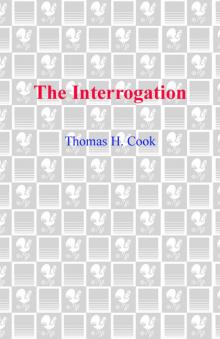 The Interrogation
The Interrogation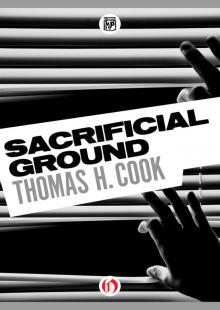 Sacrificial Ground
Sacrificial Ground The Fate of Katherine Carr
The Fate of Katherine Carr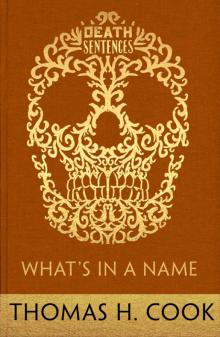 What's In A Name
What's In A Name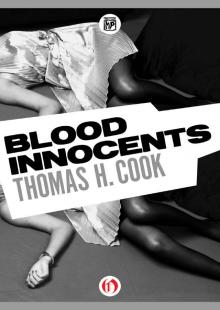 Blood Innocents
Blood Innocents Peril
Peril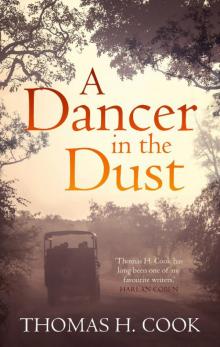 A Dancer In the Dust
A Dancer In the Dust Breakheart Hill
Breakheart Hill The Chatham School Affair
The Chatham School Affair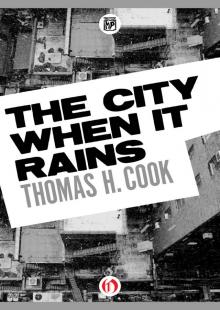 The City When It Rains
The City When It Rains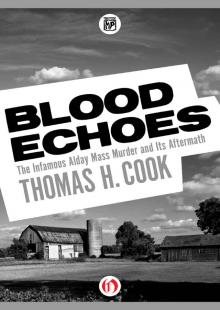 Blood Echoes
Blood Echoes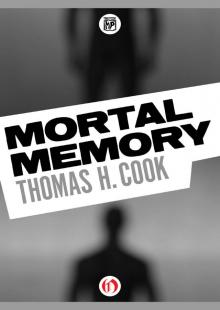 Mortal Memory
Mortal Memory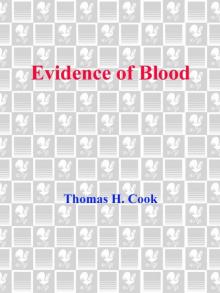 Evidence of Blood
Evidence of Blood Into the Web
Into the Web The Crime of Julian Wells
The Crime of Julian Wells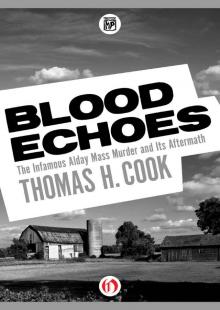 Blood Echoes: The Infamous Alday Mass Murder and Its Aftermath
Blood Echoes: The Infamous Alday Mass Murder and Its Aftermath Night Secrets
Night Secrets Places in the Dark
Places in the Dark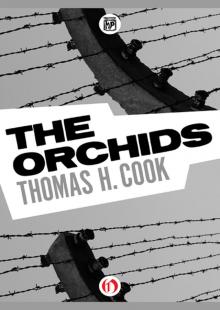 The Orchids
The Orchids Elena
Elena Streets of Fire
Streets of Fire Instruments of Night
Instruments of Night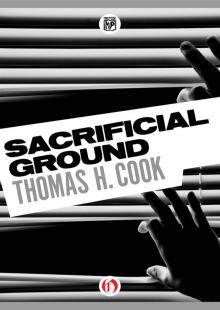 Sacrificial Ground fc-1
Sacrificial Ground fc-1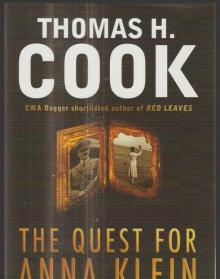 The Quest for Anna Klein
The Quest for Anna Klein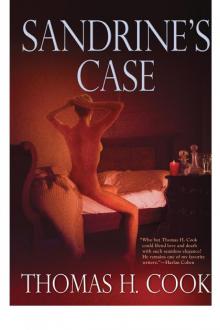 Sandrine's Case
Sandrine's Case Quest for Anna Klein, The
Quest for Anna Klein, The Fatherhood
Fatherhood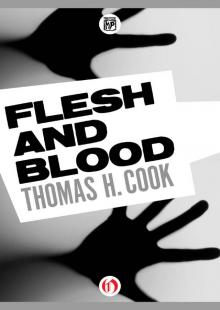 Flesh and Blood
Flesh and Blood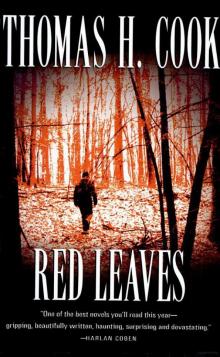 Red Leaves
Red Leaves